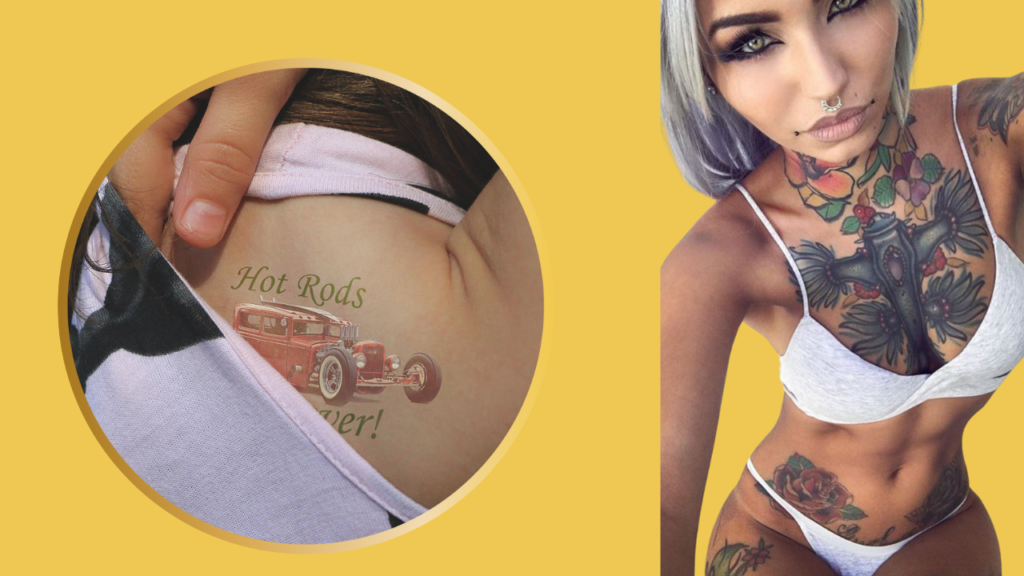How Tattoo Artists Create Custom Designs: An Art of Personal Expression
Custom tattoo designs are the epitome of self-expression, crafted to mirror individuality, memories, and emotions. But what does it take for tattoo artists to transform abstract ideas into meaningful art? Behind every personalized tattoo lies a meticulous creative process blending artistic skill, communication, and precision.
In this blog, we’ll delve into the intricate steps tattoo artists follow to create custom designs, offering insights into their craftsmanship and creativity.
Understanding the Client’s Vision
The first step in creating a custom tattoo design is understanding the client’s ideas. Tattoo artists conduct in-depth consultations to learn about their client’s preferences, inspirations, and the stories behind their desired designs.
Key questions might include:
- What does this tattoo symbolize for you?
- Are there specific styles or artists you admire?
- Do you prefer color or black-and-gray tattoos?
For inspiration, explore Tattoos Down Under, where you can find examples of artistic tattoos that push creative boundaries.
Brainstorming and Conceptualization
Once the vision is clear, the artist begins brainstorming and sketching rough ideas. This stage often involves mood boards, references, and hand-drawn drafts to capture the essence of the concept.
Custom tattoo designs vary based on factors like size, placement, and style. Popular tattoo styles include:
- Traditional: Bold lines and vivid colors.
- Realism: Hyper-detailed, lifelike designs.
- Minimalism: Clean, simplistic art with subtle elements.
If you’re looking to explore different tattoo styles, check out the blog on tattoo design trends for inspiration.
The Sketching Process
With an initial concept in hand, tattoo artists begin creating detailed sketches. These sketches are refined versions of the original idea, ensuring every element aligns with the client’s expectations.
Artists might use tools like:
- Pencil and paper for traditional sketches.
- Digital tablets and software for precision and versatility.
Digital tools are particularly beneficial for making adjustments on the fly, which is crucial for custom designs.
Collaborative Refinement
A successful custom design is the result of collaboration between the artist and client. Artists encourage feedback to tweak the design and ensure it resonates with the client’s vision.
Common refinements include:
- Adjusting proportions or scaling for placement.
- Modifying details to match personal preferences.
- Experimenting with shading and color palettes.

For expert advice on choosing the right placement for your tattoo, read Tattoos Down Under’s placement guide.
Incorporating Symbolism and Storytelling
Custom tattoos often feature symbols, words, or imagery that carry personal meaning. Tattoo artists skillfully integrate these elements into the design to create a piece that tells a story.
For instance:
- A phoenix may symbolize rebirth and resilience.
- Florals could represent growth, beauty, or cultural heritage.
- Dates or initials often honor loved ones or significant events.
The art of storytelling through tattoos has gained immense popularity. Learn more about this in our article on tattoos and their deeper meanings.
Design Finalization and Stencil Creation
After refining the design, the artist transfers it to a stencil. This stage ensures the design fits perfectly on the chosen body part and adheres to the client’s expectations.
Steps include:
- Digitizing the final sketch.
- Printing or tracing the design onto transfer paper.
- Positioning the stencil on the skin to check placement.
Execution: From Art to Skin
Once the design is ready, the tattooing process begins. Artists meticulously replicate the stencil on the skin using their tattoo machines, ensuring every detail comes to life.
During this stage, precision is critical:
- Linework establishes the foundation.
- Shading adds depth and texture.
- Colors bring vibrancy and character.
For those embarking on their first tattoo journey, read Tattoos Down Under’s tattoo care tips for pre- and post-session advice.
The Role of Artistic Skill in Custom Designs
Custom tattoo design demands a unique combination of technical skill and creativity. Talented tattoo artists are not only proficient in drawing but also deeply knowledgeable about anatomy, ink properties, and cultural symbolism.
How to Choose the Right Tattoo Artist
Selecting the right artist is crucial for a satisfying tattoo experience. Look for someone whose portfolio reflects versatility and attention to detail.
Visit Tattoos Down Under to explore a network of skilled artists specializing in custom designs.
Caring for Your Custom Tattoo
Proper tattoo aftercare is essential to preserve its vibrancy and longevity. Follow these tips:
- Keep your tattoo clean and moisturized.
- Avoid direct sunlight and water exposure for the first few weeks.
- Use high-quality tattoo aftercare products.
Conclusion: Art Meets Individuality
Custom tattoos are more than just body art—they’re a reflection of personal stories and creative collaboration. Whether it’s a minimalistic symbol or an intricate masterpiece, a custom design captures individuality like no other art form.
For your next tattoo, trust the experts at Tattoos Down Under to bring your vision to life. Explore our blog for more insights, tips, and tattoo inspirations.


Leave a Reply